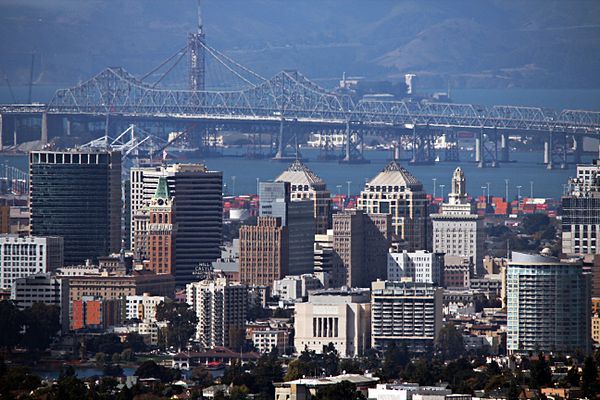Auditor: State’s 12 largest cities all at financial risk
by Chris Reed | October 29, 2019 12:59 pm

According to a new website[1] run by California State Auditor Elaine Howle and her staff, the dozen most populated cities in California all have significant fiscal problems and will be forced into major adjustments in coming years.
Eleven of the cities – Los Angeles, San Diego, San Jose, San Francisco, Fresno, Sacramento, Long Beach, Bakersfield, Anaheim, Santa Ana and Riverside – face what Howle classified as moderate risk. One – Oakland – was seen as a high risk.
All 12 of the cities face considerable stress from the rising cost of pensions. Several – especially Los Angeles – also have vast unfunded health care obligations for their retirees.
Howle’s findings were depicted as surprising in a Sacramento Bee analysis[2], which focused on the health of the state economy and the low unemployment rate. But government finance experts have long warned[3] that California’s cities – which have seen the cost of post-employment benefits roughly triple over the last 30 years – are in a far worse position to deal with pension bills that the state and counties. That’s because total employee compensation takes up a much bigger chunk of city budgets.
Howle warns cities to prepare for recession
At a news conference introducing the website, Howle said a primary goal was making sure that both local officials and residents of each city would use her office’s analysis to prepare for a possible economic downturn. Even a mild recession is likely to reduce revenue that cities get from sales and hotel taxes and from development permitting.
“If some of these [cities’] costs continue to go up and these cities aren’t prepared for them, they will have to cut services in order to pay pensions, to pay for benefits, to pay for the debts that some of the cities have taken on,” Howle said, according to the Sacramento Bee. She specifically said nearly half the cities will struggle to meet their steadily increasing payments to CalPERS.
Rankings on the website are based on the 2016-17 fiscal year, with a focus on each city’s pension obligations, pension funding, pension costs, anticipated future pension costs, retiree health care expenses, debt burden, liquidity, general fund reserves and revenue trends.
Overall, 18 cities were said to be at high risk overall, 236 at moderate risk and 217 cities at low risk. Compton – which has not produced an audited overview of its finances in five years – was judged to be in the worst shape, followed by Atwater and Blythe.
The other cities listed at being high-risk: Lindsay, Calexico, San Fernando, El Cerrito, San Gabriel, Maywood, Monrovia, Vernon, Richmond, Ione, Del Ray Oaks, Maryville, West Covina and La Habra.
Among the cities found to be in the best shape: Rancho Cucamonga, Chino Hills, Poway, Indian Wells, Rancho Mirage, La Quinta and Mountain View.
The fact that 2-year-old information was being presented by the auditor as a snapshot of cities’ current fiscal health prompted criticism from the League of California Cities.
“It doesn’t tell the story of now, and so we’re not really clear on how helpful this dashboard is to the public, to the cities or basically anybody,” Jill Oviatt, director of communications and marketing for the league, told the Bee. She likened Howle’s rankings to “a data dump that’s void of context and analysis.”
- website: https://www.auditor.ca.gov/bsa/cities_risk_index
- analysis: https://www.sacbee.com/news/politics-government/capitol-alert/article236610128.html
- warned: https://www.aier.org/article/california-cities-bankruptcy-or-pension-cuts/
Source URL: https://calwatchdog.com/2019/10/29/auditor-states-12-largest-cities-all-at-financial-risk/